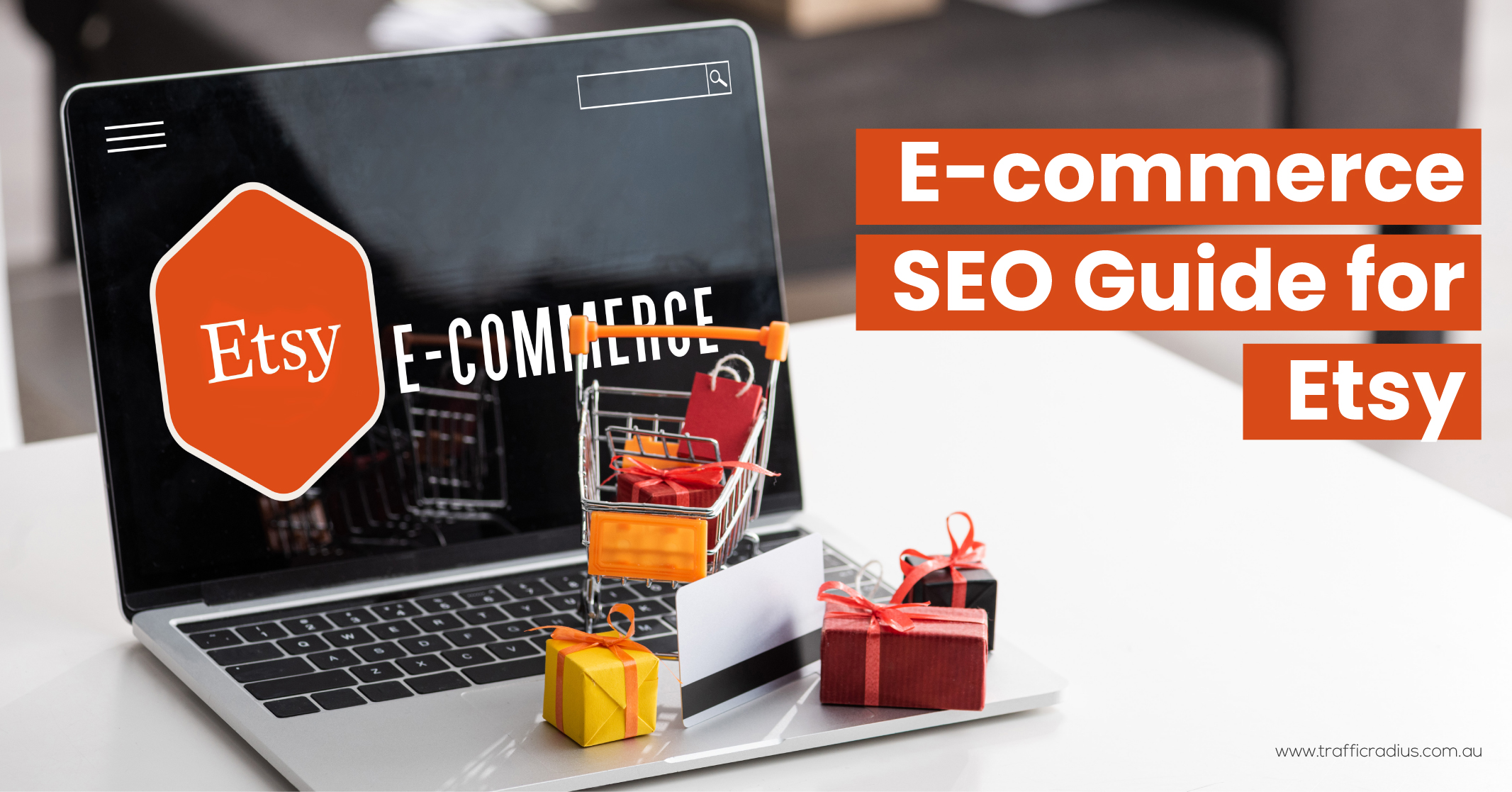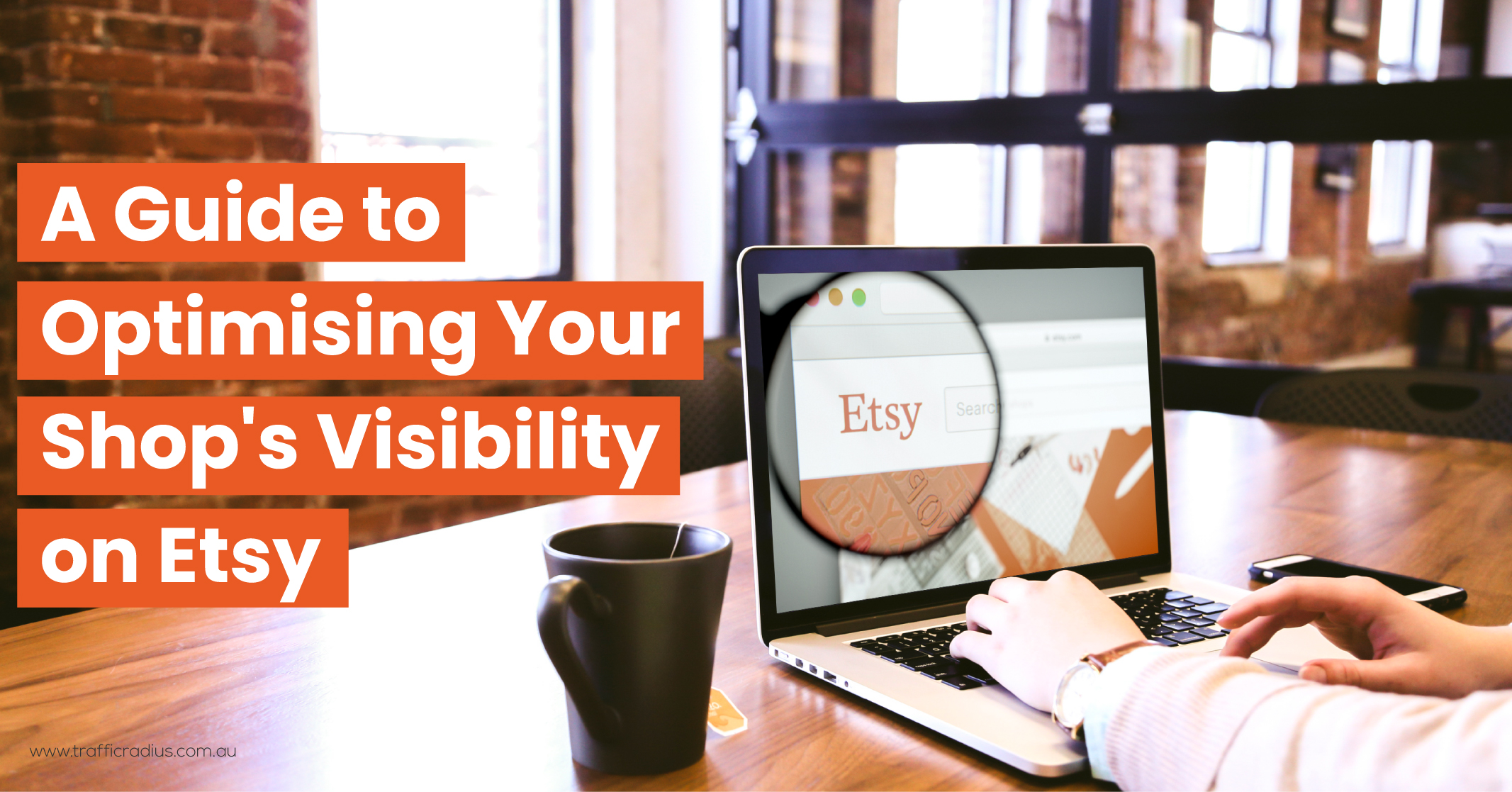A Guide to Optimising Your Shop’s Visibility on Etsy
With a substantial number of active sellers on Etsy, standing out and gaining visibility in the marketplace can be a challenging task.
- How can you make sure that potential customers discover your store amidst the sea of similar offerings?
- How do you secure a prominent position for your products in the search results?
How To Improve Etsy SEO?
Click Here – Free 30-Minute Strategy Session
Be quick! FREE spots are almost gone for this Month
Free Quote
The solution lies in adopting an effective Etsy SEO. Even if you have excellent products or services and compelling visuals, you might still struggle to attract attention on Etsy. To address this, consider enhancing your SEO approach.
Etsy SEO involves optimising your shop’s visibility to compete effectively with other sellers on the platform and ultimately increase your sales. This may encompass various techniques to improve your shop’s visibility both within Etsy’s search results and on external search engines like Google.
Importance of Having a SEO Strategy
The importance of having an Etsy marketing and SEO strategy for your Etsy shop lies in its ability to enhance search visibility. SEO involves creating content, copy, visuals, and other elements specifically designed to improve your shop’s ranking in search results.
Although SEO is commonly associated with traditional search engine results pages (SERPs), it can also be applied by smart Etsy store owners to ensure their products and store listings appear at the forefront of the e-commerce platform’s search function
E-commerce SEO Guide for Etsy

The Etsy search feature operates by considering two key elements: ranking and query matching.
Query matching involves the effectiveness of matching a potential customer’s search term with the available listings on Etsy. The search function analyses attributes, categories, tags and titles to find relevant matches for each search term.
- Quality of Listing Score: This metric measures how well a listing converts into actual purchases. A higher number of purchases leads to a better-quality listing score.
- Customer and Market Experience Score: Each shop receives a score based on customer reviews, negative feedback, and the completion of the “about” section in their shop’s description.
- Context-Specific Ranking (CSR) Technology Score: Artificial intelligence (AI) is employed to understand consumer interests and deliver relevant results. This ranking system learns from past user behaviour to identify current preferences.
- Relevancy Score: Listings with exact-match keywords receive higher rankings in Etsy’s search hierarchy. If an exact match is not found, search positions are awarded to secondary keyword sources, such as attributes, tags, titles and categories that align with the customer’s query.
- Shipping Price Score: Etsy shops often have varying shipping costs. Shops offering free or discounted shipping receive higher shipping price scores compared to those with more expensive shipping options.
- Recency Score: Newly listed items receive a temporary boost in the search results due to a high recency score.
- Translations and Language Score: Shop information should be presented in the language chosen by the consumer when they set up their Etsy account.
- Shoppers’ Habits Score: Like the CSR technology score, this metric considers past user behaviour to determine the current likelihood of making a purchase.
Improving Your Etsy Shop’s Ranking: Tips for Etsy SEO
Wondering how to do Etsy SEO?
Although the mentioned metrics might appear challenging to control, there are effective strategies to enhance your ranking in Etsy search results. By optimising these 10 key areas for Etsy SEO, you can potentially boost your shop’s overall ranking, leading to greater visibility and expanded reach for your listings.
So, if you want to implement Etsy SEO Strategies? Here is how you can do it:
Tip 1: Discovering Effective Keywords for Google and Etsy Ranking
Just like with website SEO, optimising an Etsy shop requires finding relevant keywords, creating helpful content and establishing a trusted brand.
To ensure that people can discover your products both through search engines and directly on Etsy, it’s crucial to use the appropriate Etsy SEO keywords tool to identify the keywords and use them in your shop title, tags, descriptions, and product names.
Etsy SEO examples:
For instance, let’s consider the example of the keyword “anime fish tank decorations.” When you search for this term on Google, you’ll notice an Etsy listing that matches the search query, showing the importance of relevant titles.
Etsy SEO Tips:
- By using the rightEtsy SEO keywords tool to find keywords and use them in your shop’s titles, tags, and descriptions, you can significantly enhance your visibility in search results, ultimately leading to increased sales. To find suitable keywords, you can conduct keyword research either manually or through tools.
- Manually, you can quickly find potential keywords by typing your product name or category on Etsy and observing the autocomplete suggestions. These variations often reflect commonly searched terms related to what you sell. Similarly, you can do the same on Google to gain inspiration for naming your products or shop.
- However, to assess the popularity of each suggested query, you’ll need a keyword research tool. With a free account, you can begin your Etsy keyword research.
Additional SEO Tips:
- Start by exploring the Organic Research feature and entering “etsy.com” to see the terms driving traffic to Etsy.
- Next, check the Positions report, which displays the keywords Etsy ranks for on Google in different countries, along with their estimated monthly search volume.
- For a more focused approach, filter the list with terms related to your brand. For instance, if you sell products related to BTS (the Korean boy band), you can filter for “BTS” keywords that hold the #1 position on Google.
- Use additional filters, such as Intent (the purpose of a search) and Keyword Difficulty (KD), to identify valuable keywords that lead potential customers from Google to Etsy.
After applying the filters, sort the list by volume to obtain a realistic set of keywords that can attract potential customers to your Etsy shop from Google searches. This process ensures you target the most relevant and effective keywords for both platforms.
Tip 2: Opt for a Search-Friendly Shop Name
Your shop name serves as your page title, making it your initial impression on search engines. When people look up your shop or products on Google, your shop page appears as a search result.
Etsy SEO Tips:
- To ensure easy discovery on search engines and Etsy, select a name that directly relates to the products you sell. Consider what your potential customers would search for to find your products. For instance, if you sell necklaces, incorporating the term “jewellery” somewhere in your shop title would be beneficial.
- Take “LEILAjewelryshop” as an example. It conveys the type of products sold without being overly specific.
Updating Your Shop’s Name
The good news is that you can change your shop’s name even if it’s already set up. Here’s how:
- Go to Shop Manager.
- Scroll down the menu bar and click on “Settings.”
- Select “Info & Appearance.”
- Click on the “Shop Name” tab on the resulting page to make changes to your shop name.
- After saving the changes, a confirmation page will appear.
You have the option to change your shop name up to 5 times. However, after that limit, you will need to seek approval for any further name changes.
Tip 3: Incorporate Targeted Keywords into Your Listing Details

Every aspect of your listing should be optimised for searches while remaining informative and engaging for potential customers. Keep in mind that certain keywords relevant to tags may not be suitable for descriptions.
How To Optimise Etsy SEO?
- You can include up to 13 tags in a listing, so make the most of them. Keep each tag specific and avoid repeating yourself. If necessary, consider breaking longer keywords into two tags for better visibility.
- Utilise specific keywords in your listing titles, as you have up to 140 characters to work with. Align the titles with your tags and target keywords, as this helps Etsy’s algorithm match them together and improve visibility to the right audience.
- Avoid simply copying your title.
- Write in a natural tone while incorporating a few of your primary keywords.
- Ensure that you include all essential information about your product, avoiding neglecting any important details.
- Use the listing attributes to offer comprehensive details about your product or service, including information about materials used and sustainability aspects.
Harnessing the power of social media as a seller can significantly contribute to improved SEO in multiple ways. One notable advantage is the potential to appear on Google’s SERP features, which are special results that capture searchers’ attention and occupy valuable space.
Etsy SEO Tips:
- Given Etsy’s visual nature, your social media content needs to reflect that. Even if you sell digital services on Etsy, visual posts can still be beneficial.
- Platforms like Canva offer free social media templates, streamlining the process of creating your posts by automatically setting the dimensions for each social media platform.
- Try various types of posts to determine which ones perform the best on each platform. For instance, photo posts may thrive on Instagram but not garner as much engagement on Facebook.
- To maximise your social media impact, post regularly and take note of the engagement you receive across all your channels.
- While managing multiple social media channels might seem time-consuming, you can save time by using automation Etsy SEO tools for scheduling your posts.
Etsy’s editors, merchandisers and social media managers actively search through the platform’s stores to discover suitable shops for featuring on various platforms like the Community Space, Blog, Seller Handbook, Social Media Channels, and Success Podcast.
Etsy SEO Tips:
- To increase your chances of being featured, consider submitting your shop’s story through the provided form.
- Having compelling content that is search-friendly can enhance your shop’s appeal for a potential feature. Being featured could also lead to obtaining an internal link, drawing more attention to your shop.
- Internal links, which are links within your site (such as from one page on etsy.com to another page on etsy.com), serve the purpose of helping users navigate to relevant information and assisting search engines in exploring your site.
- Pages with high engagement, like those featured on Etsy, can provide SEO benefits to less popular pages on the same site, like your new product listings, through internal links.
- Take the time to create an engaging About section that allows potential customers to understand the story and motivation behind your products.
From an SEO standpoint, it’s also an excellent opportunity to incorporate important keywords strategically. Moreover, the About section serves as a place where you can include backlinks to your brand’s pages beyond Etsy, further strengthening your online presence. Make sure to utilise this space to tell your unique story and highlight the value of what your shop offers.
Build Your Backlinks Strategy

Backlinks, which are links from one website to another, can significantly impact your online growth by directing new traffic to your website. These links also hold great importance for search engines as they view backlinks as a sign of trust. When reputable websites choose to link to your site, it signals to search engines that your content is valuable and trustworthy.
Etsy SEO Tips:
- By actively building backlinks to your Etsy shop, you have the potential to improve your product’s visibility on Google and attract more attention. This is particularly beneficial if you view Etsy as a steppingstone before expanding your shop’s brand into something more extensive. Backlinks can be an asset in taking your shop to the next level.
- Teaming up with other Etsy sellers can be a strategic move to enhance the SEO for both of your shops. You can establish partnerships where you link complementary items from each other’s shops, driving traffic and potential customers to both businesses.
- To begin networking with other Etsy shop owners, Facebook offers a great platform with several groups dedicated to Etsy sellers.
- By joining groups like “Etsy Sellers Only,” “Etsy Sellers Networking,” and “Etsy Sellers Growth and Promotion,” you can start building connections and exploring potential partnerships.
- Additionally, you can use the Facebook search bar and simply type in “Etsy” to discover more networking groups and expand your collaborations.
Contribute through Help a Reporter Out (HARO)

You need backlinks, and reporters are seeking valuable quotes. Helpareporter.com serves as a platform that connects experts in various fields with reporters and influencers who require additional insights for their articles.
If you believe you possess an expert opinion within your niche, this platform offers an excellent opportunity to secure backlinks for your shop.
The best part is that using HARO as a source is entirely free, and signing up for the service is straightforward. Once you’ve completed the registration, you’ll start receiving requests like the one shown here:
The only potential downside is that your quote may not be selected for use in a specific article. However, when chosen as a credible source, you will likely receive a valuable backlink in return.
Consider Establishing Your Website
If you’re willing to put in some extra effort that will yield long-term benefits, creating your website is a viable option. This allows you to establish a connection between your website and your Etsy shop by linking them together.
Squarespace is a popular website builder for e-commerce vendors, and it could be a suitable choice if you don’t already have a website. To begin adding products and content, refer to Squarespace’s comprehensive guide on getting started.
- Once you have some essential content on your website, it’s time to include a link to your Etsy shop in your social media handles. There are various places where you can add this link, but the homepage is perhaps the most prominent and effective location.
- To gauge the effectiveness of your link-building campaign, you can utilise the Backlink Analytics tool.
- Start by accessing Backlink Analytics and entering your target URL, which could be a specific listing URL or your main shop page.
- Click on the Backlinks report to view a comprehensive list of all backlinks pointing to your page, including recently lost backlinks.
This method allows you to monitor the growth of your backlinks during your link-building campaign and even explore your competitors’ backlinks for additional insights.
Setting Up Google Analytics to Monitor Your Metrics
Etsy provides a basic stats page that gives you an overview of your shop’s performance, such as visits, sales, conversion rate, and traffic sources. However, if you want more detailed insights, integrating Google Analytics can be beneficial.
- To begin, ensure you have both a Google account and a Google Analytics account set up. Once you have these in place, navigate to Shop Manager on Etsy, which you should be familiar with by now.
- Then, scroll down to the Settings option and click on it. From there, go to Options, where you can fill out your information in the Web Analytics tab.
- To find your Web Property ID, access the admin section of your Google Analytics account. Look under the Property section to locate your Web Property ID.
- After obtaining your Web Property ID, go back to the Web Analytics tab on Etsy and input it in the specified field. Save your changes when you’re finished.
- Instead of getting fixated on superficial metrics like impressions, focus on more crucial metrics such as sales. Take note of vanity metrics but prioritise those that truly matter in improving your shop’s online visibility.
Consistently test and track your metrics to enhance your shop’s SEO and ultimately increase your sales. By doing so, you can effectively optimise your shop’s performance and achieve greater success.
Conclusion
By following the steps outlined above, you possess all the necessary Etsy SEO tools to optimise your Etsy shop, attracting more views and ultimately boosting tools your sales.
Remember that SEO is a cost-effective alternative to paid advertisements and allows you to compete with larger-budget shops in the long run. If you’re truly committed to the success of your shop, dedicating time to improving your SEO is essential.








LEAVE A REPLY